Story by REDintern Alan Chiang, Photo by Les Tan/Red Sports and Vanessa Lim/Red Sports

The boys’ cross-country team from Bukit Batok Secondary after the race. (Photo 1 © Vanessa Lim /Red Sports)
Temasek Polytechnic Stadium, Wednesday, March 25, 2009 - The Singapore Sports School had a decent showing at the recently-concluded 50th National Inter-School Cross-Country Championships where they securing third positions in the boys’ B and C Division, as well as the girls’ C Division.
The focus of Sports School is not on winning medals though, but on a ensuring that the runners do not burn out, according to Jenny Lim, the general manager of the Track and Field Academy at the Singapore Sports School.
"We are moving in a different direction for Sports School,” said Ms Lim. “We have scaled down our training programmes to three times a week as we are thinking of the long-term to ensure our runners are able to sustain the pace throughout the year."
She added, "We are currently concentrating on the SPH relays this coming Saturday and Sunday at Gombak Stadium and have plans for the students to participate in the A Division."
The Victoria Junior College boys team finished second to Raffles Junior College in the A Division while their girls team had to settle for fourth position behind Hwa Chong Institution and Catholic Junior College.
The girls' team suffered a blow when one of their runners sustained leg cramp during the race and had to be withdrawn from the competition due to safety reasons.
Jaclyn Ng, coach and teacher-in-charge of VJC said, "I guess we will need to concentrate on speed training when we are closer to the race dates. We will also encourage the team to join more races as that allow them to gain exposure and be more competitive in future."
She added, "We are capable of better results as we have new runners who just joined the team and they are still fresh in such competitive races. We only have two seasoned runners who took part in the B Div last year."
Bukit Batok Secondary had their sports day the previous day, leaving them a little tired out on the day of the cross-country championships. But the enthusiasm to compete with the top runners was there, said Nadiah, 16, a Bukit Batok student and cross-country runner.
Hafiz, 15, another Bukit Batok crosser, added, "We were pushing each other at the start line so as not to be at the back."
Over 97 schools took part in the 2009 National Inter-School Cross-Country Championships. They fielded at least 227 teams with a total of 1,557 runners.

The girls’ cross-country team from Bukit Batok Secondary after the race. (Photo 2 © Vanessa Lim /Red Sports)

The National Junior College team taking some time to warm up on the Temasek Polytechnic track before the race. (Photo 3 © Les Tan/Red Sports)

A St. Joseph’s Institution runner collapses in fatigue at the finish line and is helped up by a team-mate and a St. John’s Ambulance Brigade personnel. (Photo 4 © Les Tan/Red Sports)

A Singapore Sports School runner is floored by a flood of emotions at the finish. (Photo 5 © Les Tan/Red Sports)

Janielle Lim of CHIJ St. Nicholas Girls’ who finished second in the girls’ C Division, collapses at the finish. (Photo 6 © Les Tan/Red Sports)

Soh Rui Min from Cedar Girls’ came in 7th position in the B Division girls’ race, in a time of 17 minutes 34 seconds. (Photo 7 © Les Tan/Red Sports)

Chua Kah Kah from River Valley High, the younger sister of former Jurong Secondary and Anglo-Chinese Junior College cross-country champion, Chua Ee Ghim, finished 12th in the B Division in a time of 17 minutes 51 seconds. (Photo 8 © Les Tan/Red Sports)

The Raffles Institution girls’ team. From left: Chew Hanyu (A Division winner) and teammates Raina Lee Rui Na and Look Xinqi. (Photo 9 © Les Tan/Red Sports)

Jonathan Tan from Anglo-Chinese Junior College pushing for a strong finish. (Photo 10 © Les Tan/Red Sports)

A Victoria Junior College girl sobs in the arms of a teammate. She was apparently not allowed to continue her run after suffering from cramps. (Photo 11 © Les Tan/Red Sports)

Supporters from Victoria School cheering their schoolmates as they head down the home-straight. (Photo 12 © Les Tan/Red Sports)

Benjamin Wong, the father of the B Division winner Clara Wong, is the consummate parent-supporter as he turns up for every one of his daughter’s races. He is beaming with pride here as he takes a picture of Clara receiving her trophy. (Photo 13 © Les Tan/Red Sports)

Raffles Institution supporters breaking into a cheer. (Photo 14 © Les Tan/Red Sports)

Guest-of-honour, LTC Fred Cheong, a wing commander at the Officer Cadet School (OCS), gives out medals to the top-20 runners and top-3 teams. (Photo 15 © Les Tan/Red Sports)
REDpoll
More pictures in the gallery.



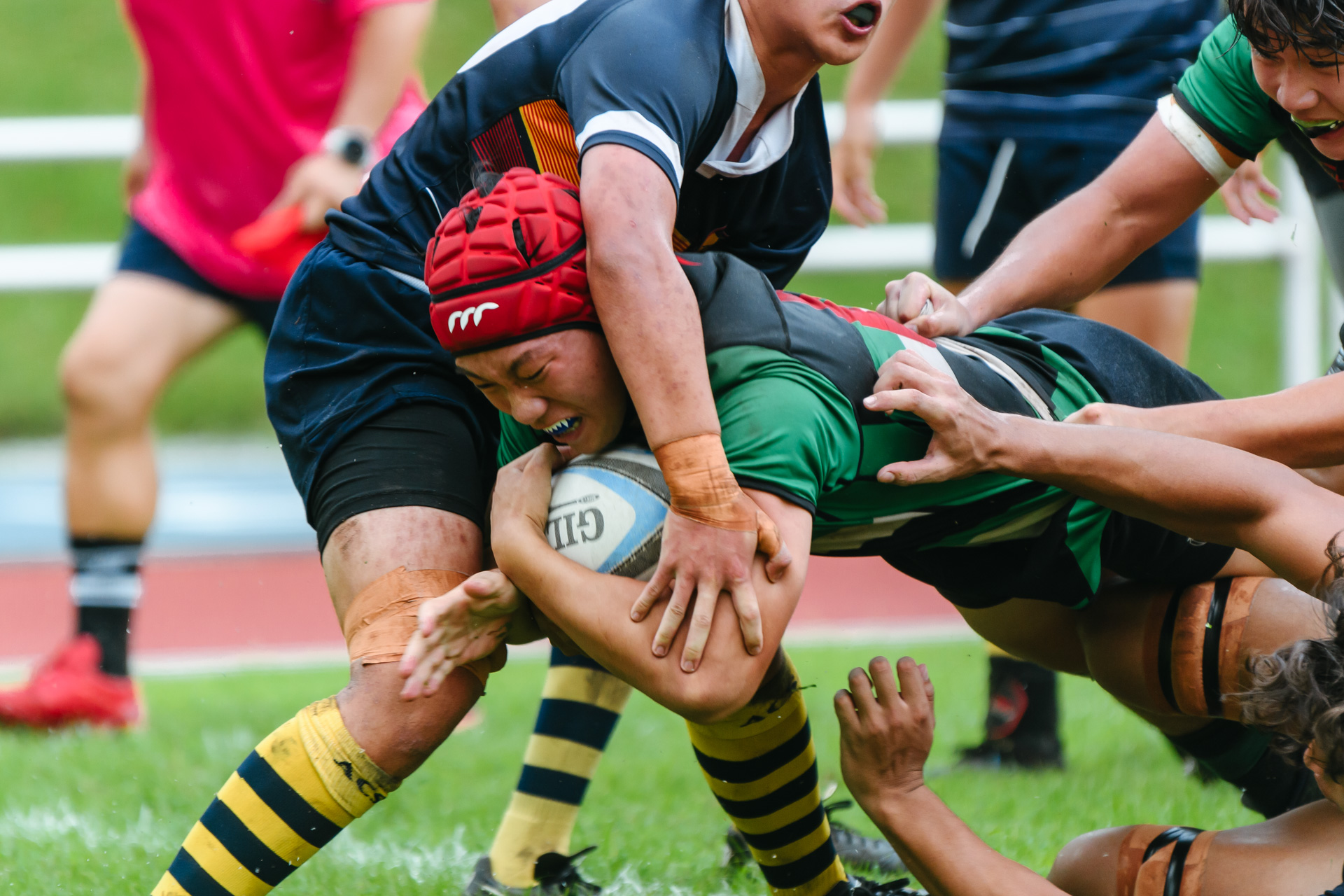
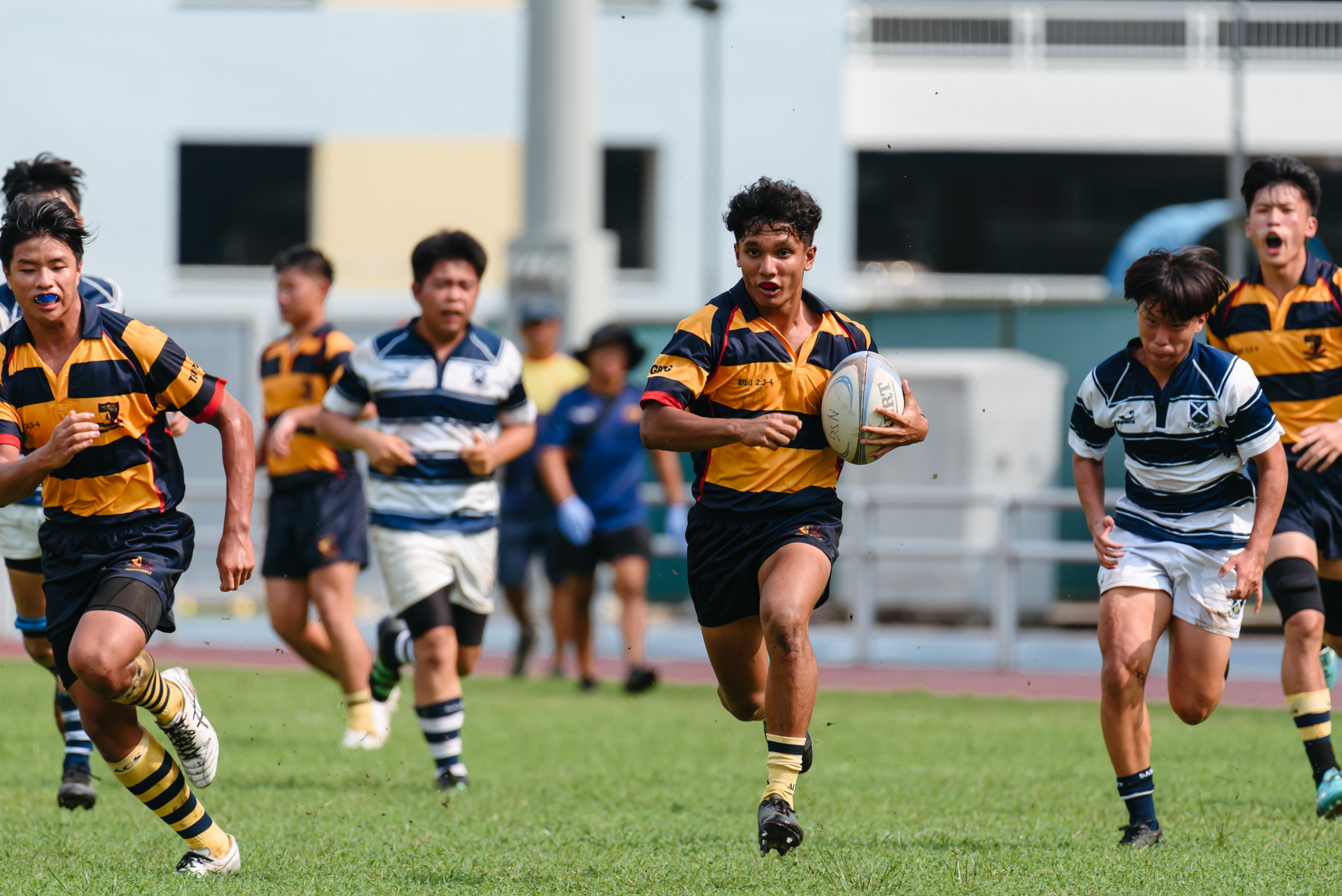
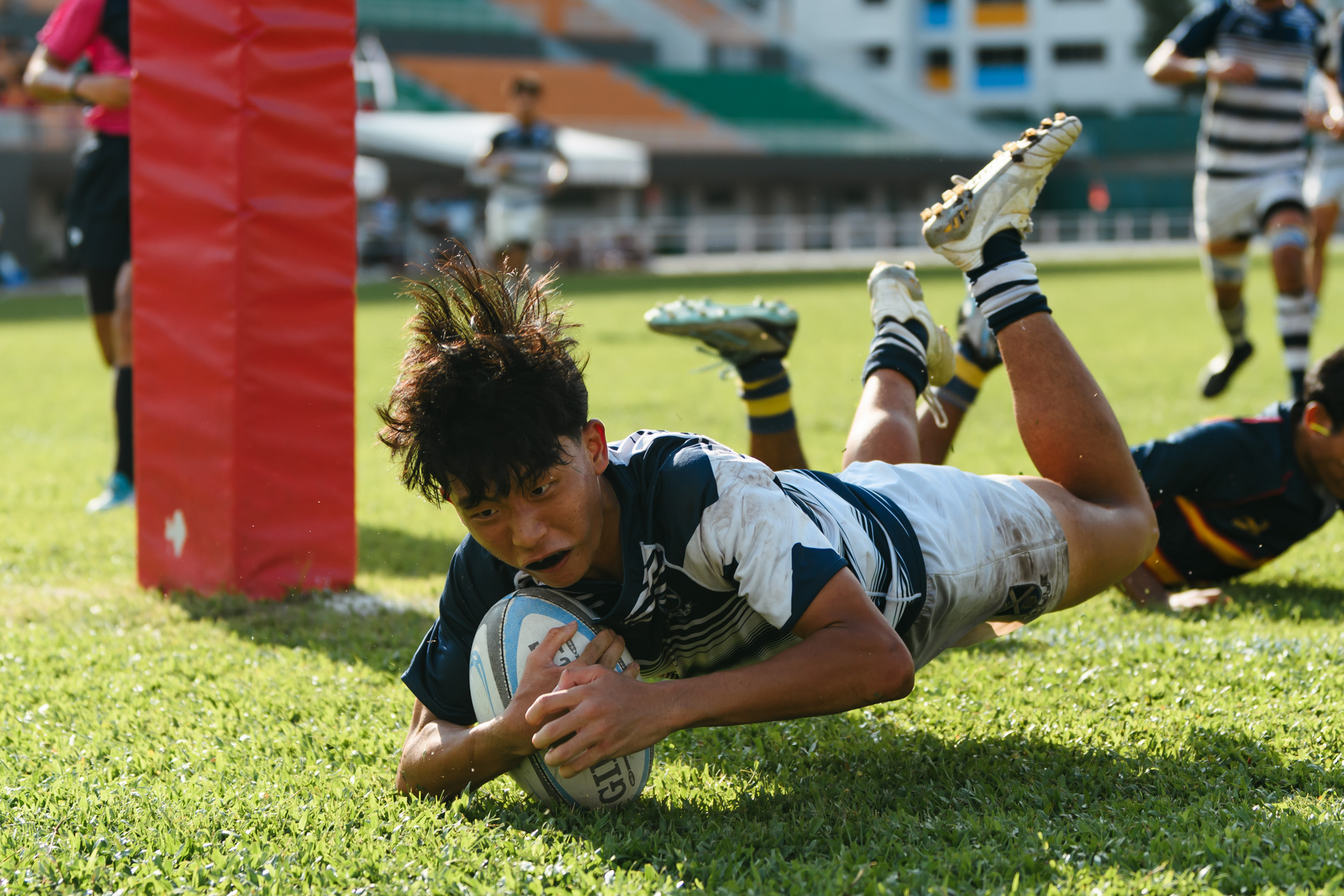

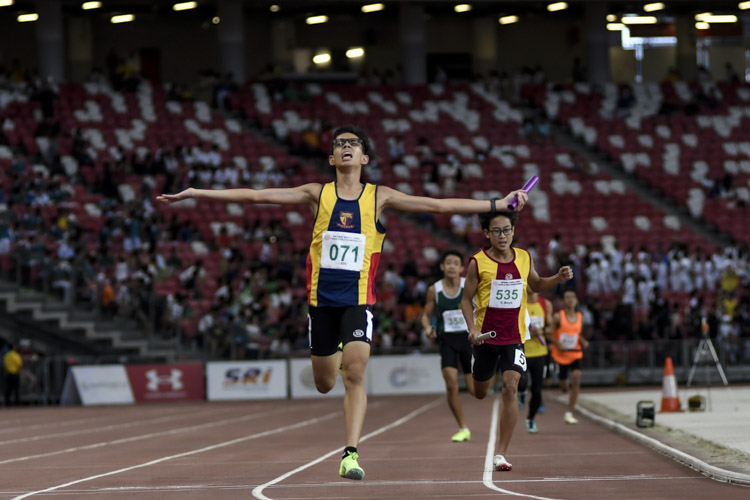
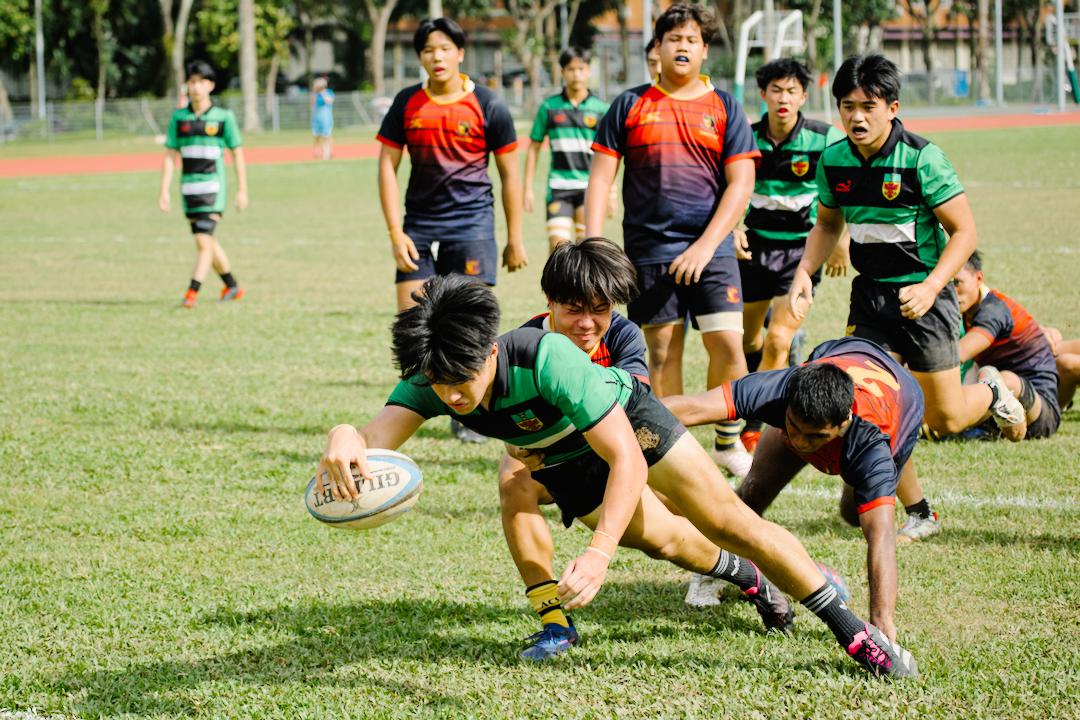
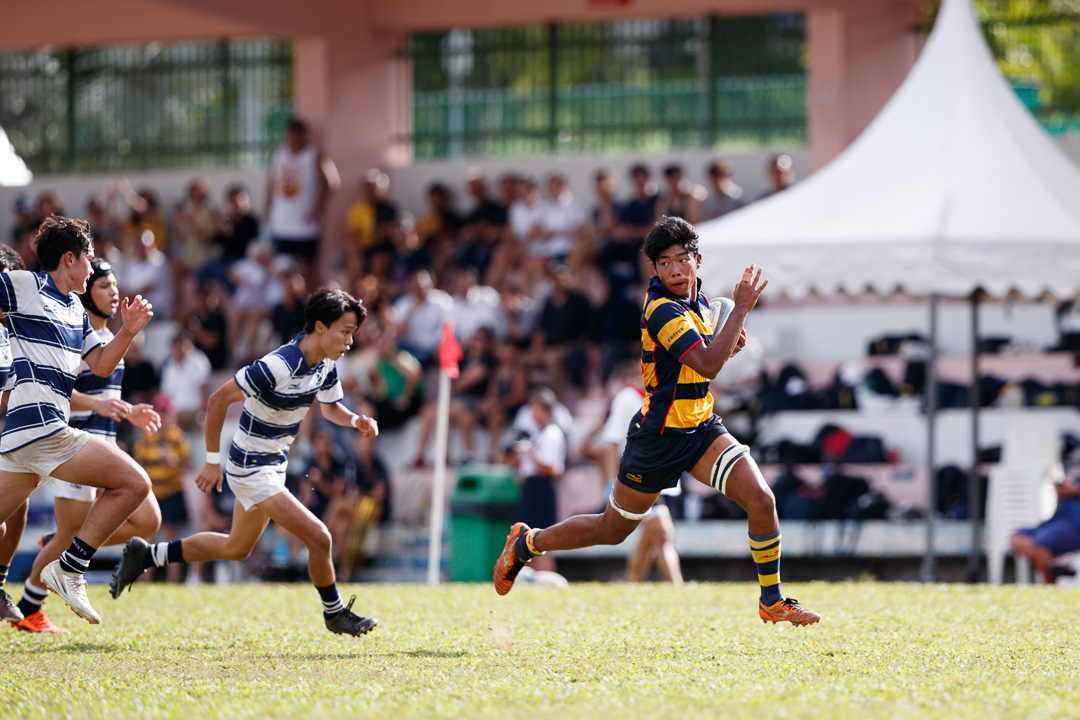
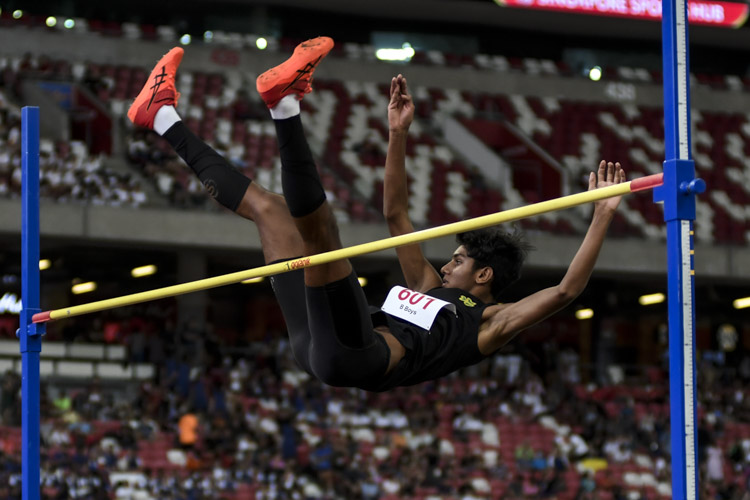
It’s totally not the volume, but the intensity. Train 3 times a week HARD, is gg to burn them out. As compared to 6 times a week easy, with the sole aim of building a good base.
GUYS. It’s NOT THE VOLUME, but the intensity that burns runners out. Young runners should get some good mileage done, but leave the high intensity out.
Photo 11: Girl pictured was not the one who was out for cramps.
Agree that running more mileage is not the answer to success.Please read the following link, even the US Collegiate system which has produced so many Olympic gold medalists in track and field has this problem.
http://runningtimes.com/Article.aspx?ArticleID=16026
Do we need 100 plus km per week for juniors to produce world class athletes? How many distance runners have made it to a world class stage from Singapore doing that? None!
An interesting thought to see where these top young athletes end up in 5, 10, years time. None from the previous era have lived through it so far. So if there is indeed a good plan towards long term athlete development, let’s work on it!
I think track & field/ x-country is a sport where you train a lot more than you race so maybe the Singapore Sports School (SSS) feels that they would rather pace their students and ensure the runners don’t gradually lose interest. A interesting point to note is this. Some of you may be familiar with Australia’s Little Athletics(LA) program. I’m not sure about now but they used to race against Singapore and later Malaysian school athletes(u-15 if I remember correctly) yearly. It is a immensely popular and successful program state wide which started in Australia in 1964. While I’m not sure about recent statistics, only 1 athlete in recent times Werner Reiterer, a discuss thrower manage to progress beyond its (LA) program to represent Australia at the 1988 and 1992 Olympics. What is my point? Very few athletes make it past LA to even senior national teams, some because they were beaten and couldn’t handle it. Some were very good as juniors, but as seniors there were many better. Others burnt out. Some came from families who pushed the kids too hard; others had families/ relationships that didn’t support them. There are plenty of things that seem more appealing than spending long, lonely hours in the gym or on the track/ road. The road to the Olympics (or success) is steep and rocky, there’s lot’s of ways to get knocked over along the way. Now, how many of you know among your friends and peers talented sports men/ women that have gotten side tracked along the way? I’ve seen and treated many along the way.
Another point to note is that students at the SSS are still fairly young (13-16), so they may not be able to handle too much volume and intensity. Plus in our humid climate we tend to recover slower . Run 10km here and compare it to running 10km in say Australia and you will definitely feel the difference.If we copy others’ training program, we can only be as good as them, we need to do things which suit as so we can be better.
You guys are not getting my point. this students are in a sports school. they can afford to train hard like the US students. train 2 times a day, run 80km weeks and slowly build up too 100+km a week. why? cus they have their recovery planned out for them. Sports is no.1 priority. if not why go sports school? And how can sports school be not even competitive for the championship? at least 2nd? You guys should go read up more about how athletes in other countries train. 3 times a week is for amatuers athletes who need to juggle mainstream studies and training like in normal schools. 3 times for sports school is wasting taxpayer moneys. maybe just google ryan gregson of australia and see how many km he run a week and how old he is then you know what i am talking about. something is wrong with the sports school.
sports school are really good, james. We beat sports school not because we were better than them, really, we were equal.If i’m not wrong they were sick. Food posioning. And yes burn out is a big issue, cause it’s the main cause of runners underperforming. And those who run for Cross Country will take the 3000,1500,steeple. So, protecting their runners from burn out is nothing wrong. Every schools does it, thats why you don’t see people doing hard trainings everyday
You have sportsmanship, bryan-victorian. A credit to you, your family and your school. I presume it is Victoria School.
oh yes. and what rubbish. the runners running xcountry are nott the same ones running schools relay. so what peaking here and there? sth wrong in the sports school
There are similar runners at both events. You are incorrect, James.
this is a little wierd. so u mean all those schools who are beating sports sch are trng too hard and in danger of burn out? then i suggest someone look into this and prevent these kids from burning out.
If that is not the case, somethng is wrong with their performances. how can they lose to their peers in the race? they we chosen to go to sports sch cus they were good.
3 times a week is rubbish. these kids have their school moulded around their trng and recovery. i am sure they can adford more than 3 sessions of trng a week?! the focus for them is to run fast and not normal students in mainstream schools. sth is wrong here!